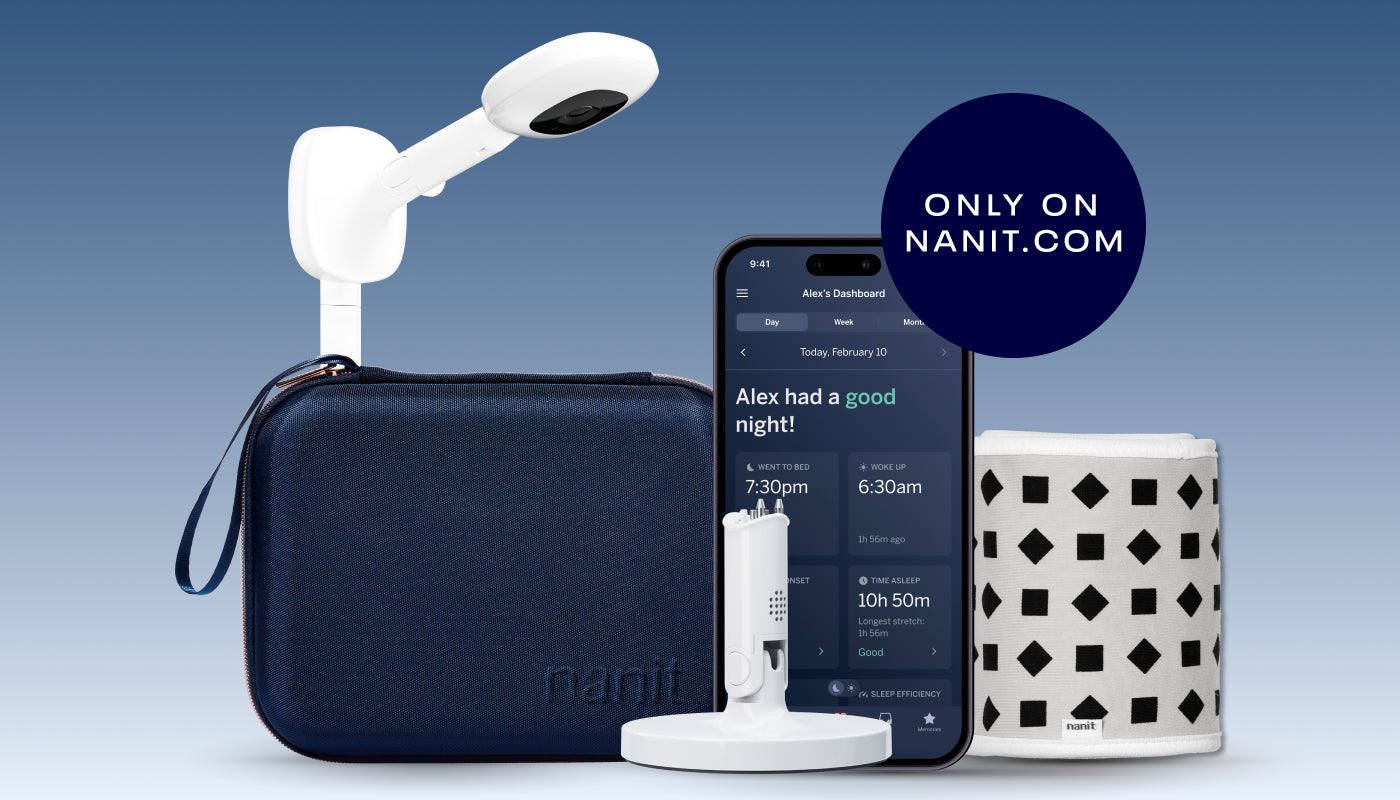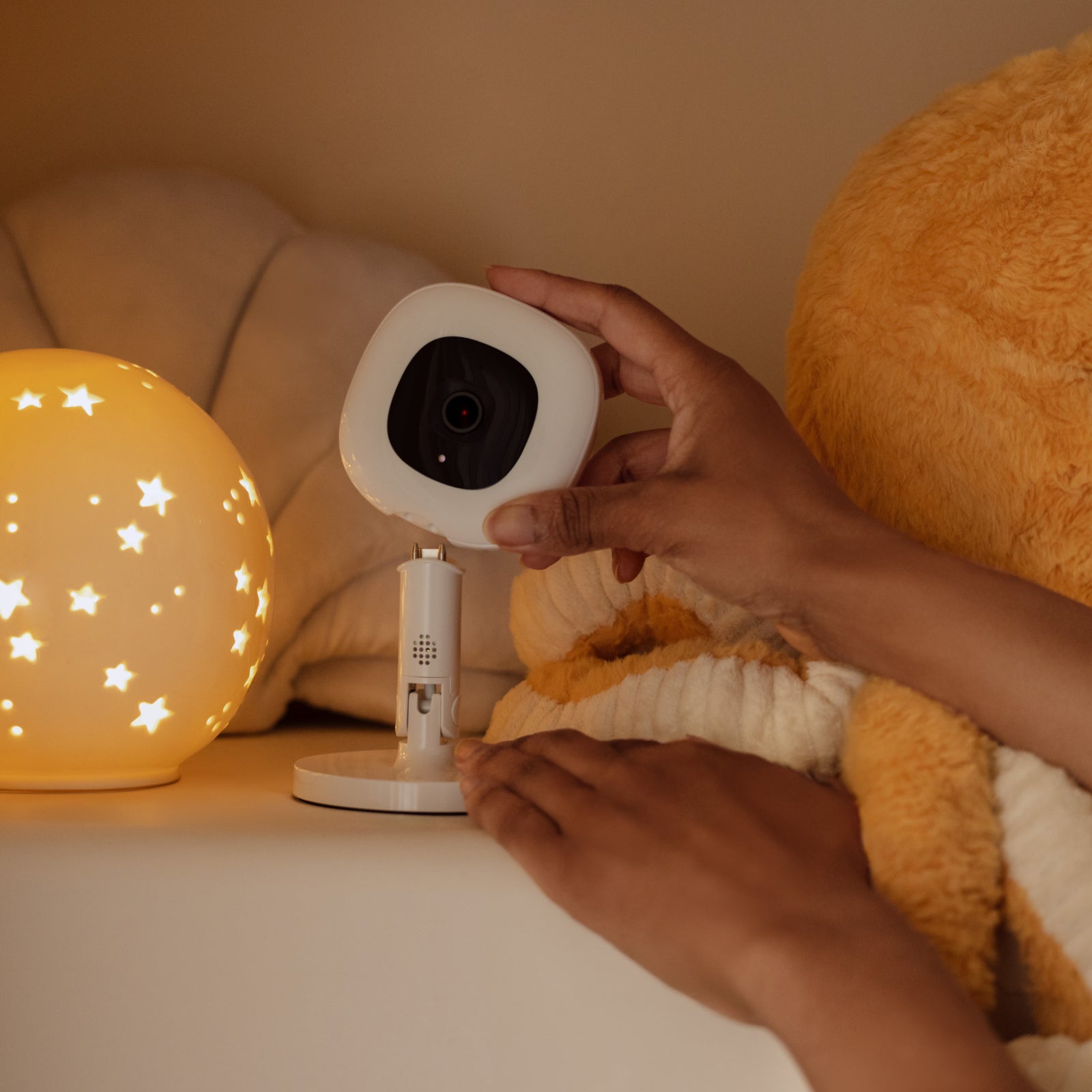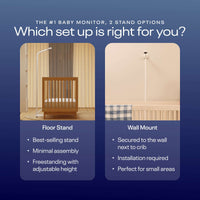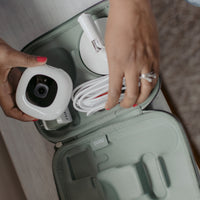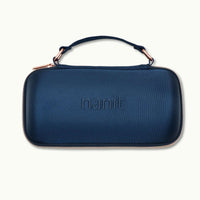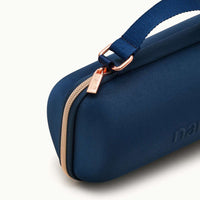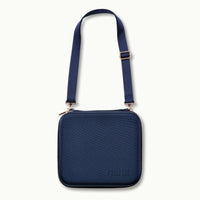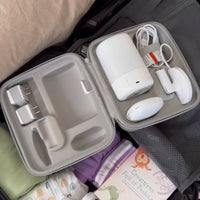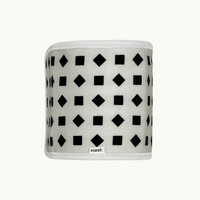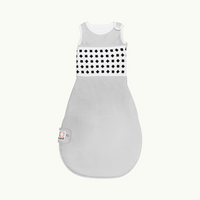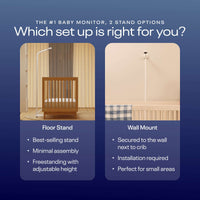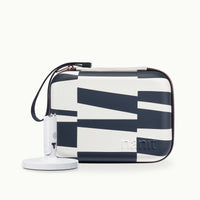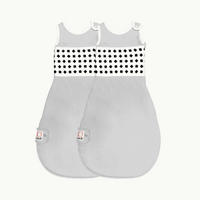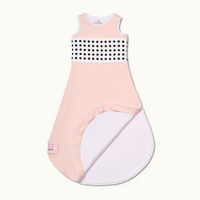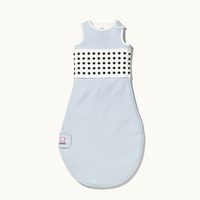Reviewed by Nanit Lab's Dr. Natalie Barnett.
Step-by-step guide: How to swaddle a baby
Picture this: it's 3 a.m., you can barely keep your eyes open, and the wails of your newborn sound like an alarm bell. Practically every new parent has experienced this nocturnal narrative. It’s in these moments—when sleep seems like a distant dream and your child won’t rest—that finding a solution to soothe your baby to sleep becomes a matter of urgency.
Enter the art of swaddling, a timeless parenting tactic that has soothed generations of infants back to sleep, providing countless parents with much-needed rest. But how do you swaddle a baby the right way—and how long can you swaddle a baby?
This guide will answer questions such as “What is swaddling?” and show you exactly how to swaddle newborn babies.
Evolution of swaddling
Swaddling is an ancient infant-care practice, which involves wrapping a baby in a swaddle blanket (or sometimes a prebuilt swaddle) to secure their limbs and restrict movement. This secure, snug wrap emulates the comforting confines of mother’s womb, promoting a soothing effect.
However, for most of its history, swaddling was perceived as a vital part of child development more than merely a calming technique.
The snugly bound infant, now less wriggly and more compact, made for easier transport. Additionally, it was believed that this relative confinement would aid the baby's physical development, ensuring that their limbs would grow strong and straight.
However, the perception and purpose of swaddling experienced a significant shift in the '90s, with the "Back to Sleep" campaign. In a nutshell, researchers created a campaign that advocated for parents to place infants on their backs (supine position) to sleep, as opposed to the previously prevalent practice of stomach (prone) sleeping.
This shift towards supine sleeping inadvertently led to increased incidents of infants startling awake due to the Moro (or startle) reflex. As a result, parents and caregivers began searching for safe and effective strategies to mitigate this startle reflex and help their babies sleep better and longer.
Swaddling naturally resurfaced as a preferred method that could effectively:
- Reduce the impact of the startle reflex
- Soothe the baby
- Promote longer, more restful sleep
How to properly swaddle a baby
The conventional baby swaddle entails wrapping a thin, large, soft blanket around the baby and tucking it in securely to create a snug and cozy cocoon.
Naturally, there are several different techniques for swaddling a baby. The best one will likely depend on the baby’s personal wake and sleep preferences. For instance, some babies prefer having their arms included in the swaddle, while others want to have their arms free to move about.
With that in mind, here are three of the more common swaddling techniques:
The diamond swaddle
This is the most traditional swaddling method, typically using a square or diamond-shaped blanket. To perform this tuck, follow these steps:
- Lay out a thin, lightweight square blanket on your bed or couch in the shape of a diamond. Fold the top corner down toward the center point of the diamond, forming a straight line at the top.
- Lay baby face up on the swaddle blanket, aligning their neck with the now-straight top edge.
- Gently hold baby’s left arm down along their side or bent upwards at their chest. Take the blanket about 4 inches from baby’s left shoulder and pull it down and across their body tightly, tucking it underneath them on the opposite side. You should aim for snugness, without being too tight or too loose.
- Lift the bottom corner of the blanket up over baby’s legs and right arm, tucking that corner behind their right shoulder. Make sure to keep it a little loose around baby's legs and feet to allow movement.
- Finally, take the remaining corner, pull it across baby’s body (making sure the baby’s arm is straight), and tuck it in snugly.
It may take the right swaddle blanket and a few practice attempts to master this technique. Once you get it down, your baby should stay properly wrapped until their next change or feed.
The square swaddle
The square swaddle offers a slight twist to the diamond method. Instead of positioning your swaddling blanket as a diamond, you start with a straightforward square setup. While this technique is a bit quicker to master, it does sacrifice some of the diamond swaddle's secure tuck.
That said, for parents who are pressed for time or dealing with a particularly squirmy baby, the square swaddle can be a handy substitute technique. To get started, follow these steps:
- Lay a thin, lightweight square blanket on a bed, floor, or couch. Position it as a square instead of a diamond, with the top corner just above baby's shoulder.
- Place baby face up on the blanket so that their shoulders line up with the top edge of the blanket.
- Gently straighten baby’s left arm and pull the left corner of the blanket over their body, tucking it securely under their right side.
- Fold the bottom corner up over baby's feet.
- Straighten baby's right arm, then pull the right corner of the blanket over their body, tucking it under their left side.
The arms-out swaddle method
Since some babies want to have their arms out of the swaddle, especially for self-soothing, they might prefer to have one or both arms free. In this case, the swaddle can be wrapped around the baby’s torso below the arms. For that method, follow these steps:
- Lay out a thin, lightweight square or diamond blanket on a bed or couch, or the floor.
- Place baby on the blanket so that their shoulders align with the horizontal top edge of the blanket.
- Lift baby’s left arm, then wrap the left corner of the blanket under the arm and over the baby’s body, tucking it under their right armpit and behind their back.
- Lift baby’s right arm, then take the right corner of the blanket and wrap it across baby, tucking it under their left armpit and behind their back.
- Take the bottom corner of the blanket and tuck it loosely behind baby, making sure their legs and feet can move freely.
Is swaddling safe?
Swaddling has been proven safe when done correctly. However, certain precautions should be taken to ensure the baby's comfort and safety, such as:
- Positioning. Always place babies to sleep on their backs when swaddled.
- Choice of material. When swaddling baby, use lightweight, breathable fabrics like cotton. Choose materials that have some give when stretched, without constricting the baby.
- Swaddle tension. Proper swaddle tension is essential. Parents must balance the line between snug and overly restrictive. The wrap should be tight enough to prevent baby from wriggling out, but loose enough to allow baby's chest and legs some movement for comfort and healthy hip development.
- Temperature considerations. Consider both baby's body temperature and the room's temperature before swaddling, especially if you plan to use a thicker type of wrap.
- Hip mobility. To avoid infant hip dysplasia—a condition where the hip joints don’t form correctly—ensure that the swaddle is not too tight around baby's hips and knees. They should have enough freedom to move these parts, mimicking the "frog-leg" position they naturally adopt inside the womb.
The potential shortcomings of the traditional swaddle
Even with practice and patience, the traditional blanket swaddle has its shortcomings. Getting a good swaddle on a baby can be a struggle, and achieving the proper tension can be tricky— an overly tight swaddle may restrict breathing and contribute to overheating—whereas a loose one can unravel, posing a suffocation risk.
Swaddling is widely considered to be a wonderful practice that can help your baby achieve a deeper, more restful sleep. That said, swaddling is not meant to last indefinitely, and knowing what age to stop swaddling is also essential for your baby's safety and development.
How to swaddle baby with Nanit
The concept of swaddling holds significant merit—it can help soothe the baby, preventing the startle reflex and promoting better sleep. However, it might be worth transitioning away from the centuries-old blanket method in favor of more convenient sleep solutions better aligned with the modern parent's needs and concerns.
That's where Nanit's innovative baby sleep wear—like our Breathing Wear Swaddle and Sleep Wear Swaddle—can transform your infant care.
Our modern swaddles retain all the benefits of swaddling, while also offering superior convenience, safety, and functionality. There’s no folding, fidgeting, or tucking. The baby will also have less of a chance of wiggling their way out. With Nanit, swaddling becomes less of a middle-of-the-night waltz and more of a hassle-free routine (meaning more rest for you!).
Editorial Team
Dr. Natalie Barnett:
 Natalie Barnett serves as VP of Clinical Research at Nanit. Natalie initiated sleep research collaborations at Nanit and in her current role, Natalie oversees collaborations with researchers at hospitals and universities around the world who use the Nanit camera to better understand pediatric sleep and leads the internal sleep and development research programs at Nanit. Natalie holds a Ph.D. in Genetics from the University of New England in Australia and a Postgraduate Certificate in Pediatric Sleep Science from the University of Western Australia. Natalie was an Assistant Professor in the Neurogenetics Unit at NYU School of Medicine prior to joining Nanit. Natalie is also the voice of Nanit's science-backed, personalized sleep tips delivered to users throughout their baby's first few years.
Natalie Barnett serves as VP of Clinical Research at Nanit. Natalie initiated sleep research collaborations at Nanit and in her current role, Natalie oversees collaborations with researchers at hospitals and universities around the world who use the Nanit camera to better understand pediatric sleep and leads the internal sleep and development research programs at Nanit. Natalie holds a Ph.D. in Genetics from the University of New England in Australia and a Postgraduate Certificate in Pediatric Sleep Science from the University of Western Australia. Natalie was an Assistant Professor in the Neurogenetics Unit at NYU School of Medicine prior to joining Nanit. Natalie is also the voice of Nanit's science-backed, personalized sleep tips delivered to users throughout their baby's first few years.Sources
NIH. Safe to Sleep Campaign History. https://safetosleep.nichd.nih.gov/campaign/history
Hip Dysplasia. Understanding Hip Dysplasia: Infant & Child. https://hipdysplasia.org/infant-child/
Healthy Children. Swaddling: Is it Safe For Your Baby? https://www.healthychildren.org/English/ages-stages/baby/diapers-clothing/Pages/Swaddling-Is-it-Safe.aspx
